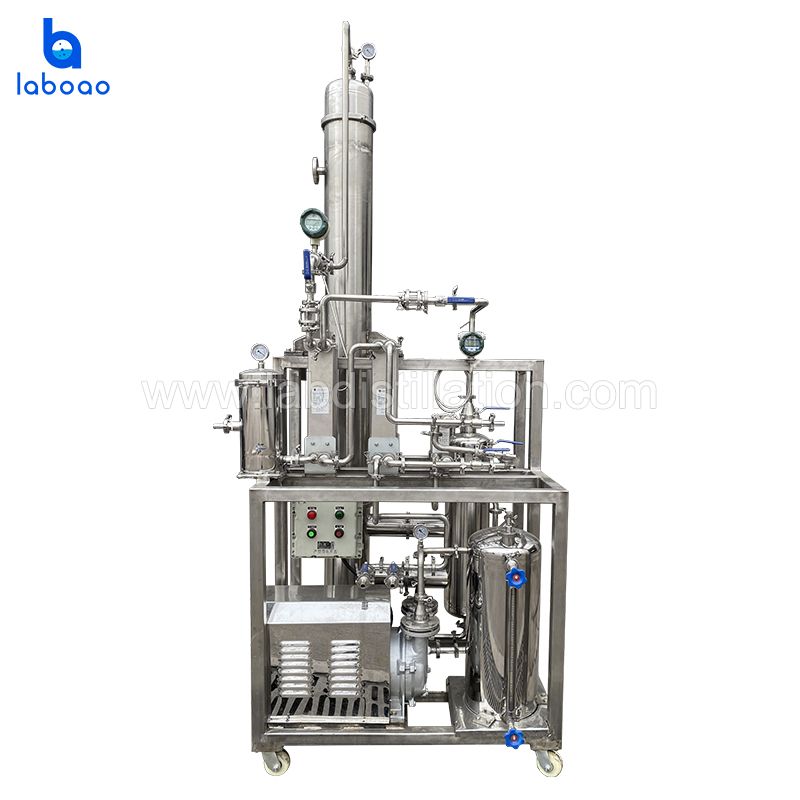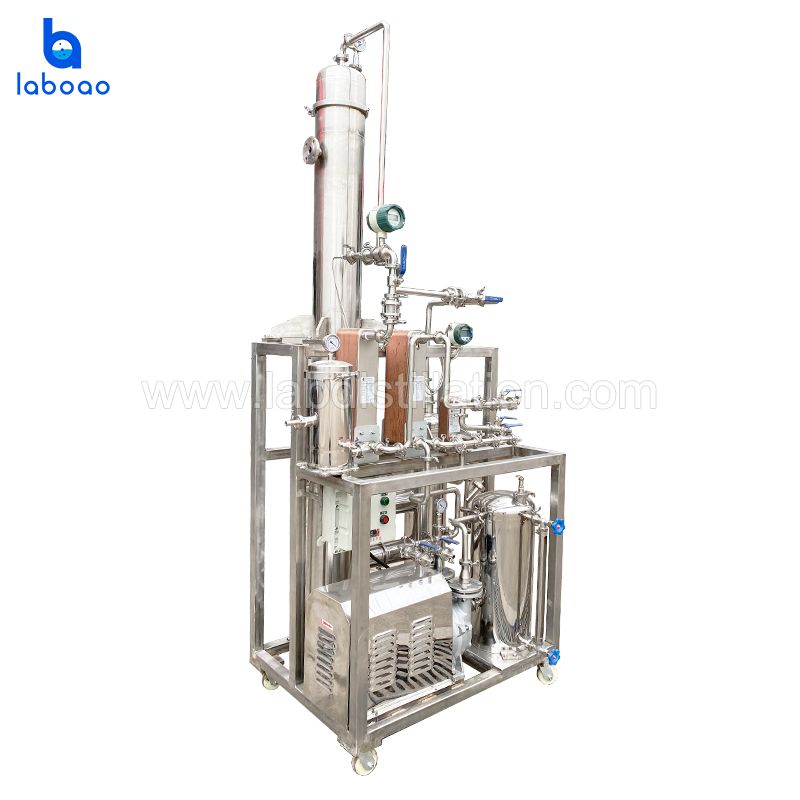
The core principle is to promote heat transfer and material separation through the thin film flow of liquid on the heated surface. The process principle of the falling film device is based on the following key features:
1. Thin film flow of liquid
Falling film principle: When the liquid flows on the heating surface, a thin liquid film is formed. This film flows along the surface of the equipment under the action of gravity and surface tension. On the heating surface, heat is transferred to the liquid, and the liquid evaporates quickly, leaving a concentrated solution.
Thin film characteristics: The liquid film is very thin, so the heat transfer efficiency is high, and the evaporation or concentration process can be completed in a shorter time, with high thermal efficiency.
2. Heating surface
Heating method: Steam or hot water is usually used as the heating medium, and heat is transferred to the liquid through a heat exchanger. The heating surface is generally designed as a vertical or inclined pipe, plate surface or tube bundle.
Heat transfer efficiency: The heat transfer efficiency of the falling film device is closely related to factors such as the thickness of the liquid film, flow rate, and heating surface temperature. Thin film flow can greatly increase the heat transfer rate and reduce heat loss.
3. Liquid flow
Liquid feeding method: The liquid usually enters the equipment from the top and is distributed to the heating surface. The liquid gradually forms a thin film on the heating surface and flows down along the surface.
Gravity: On a vertical or inclined heating surface, the liquid forms a falling film due to gravity, and the flow rate of the liquid is generally related to the thickness and surface tension of the film.
4. Evaporation and concentration
Evaporation process: When the temperature of the heating surface is high, the water or volatile components in the liquid absorb heat and evaporate rapidly. During the evaporation process, the concentration of the solution continues to increase.
Material separation: Falling film evaporation devices are often used for solution concentration, especially for heat-sensitive substances and high-viscosity solutions. During the concentration process, the dissolved substances in the solution gradually increase as the water evaporates.
5. Separation of gas and liquid
In a falling film evaporator, the steam generated by evaporation is discharged through the outlet at the top or side of the device. After the steam is separated from the liquid, it can be further condensed and recycled, or discharged.
Condensation and recovery: The discharged steam can be cooled by the condenser and its heat can be recovered, further improving the thermal efficiency.
Advantages of falling film device
1. High thermal efficiency: Because the liquid film is thin, the heat transfer efficiency is very high, and the evaporation or concentration process can be completed at a lower temperature difference, reducing the waste of heat energy.
2. Simple operation: The liquid is evenly distributed on the heated surface, and the operation process is relatively simple and easy to control.
3. Strong adaptability: The falling film evaporator is particularly effective in evaporating and concentrating high-concentration, high-viscosity and heat-sensitive substances, and has strong adaptability.
4. Energy saving: By reducing heat loss, energy consumption is reduced, especially in multi-effect systems, the heat energy in steam can be recovered and utilized to the maximum extent.
Summary: The falling film device relies on the characteristics of the liquid forming a thin film on the heated surface and flowing along the surface, and can efficiently complete heat exchange processes such as evaporation and concentration. Its advantages include high thermal efficiency, energy saving and simple operation, and it is widely used in many industries such as chemistry, food, and pharmaceuticals.

